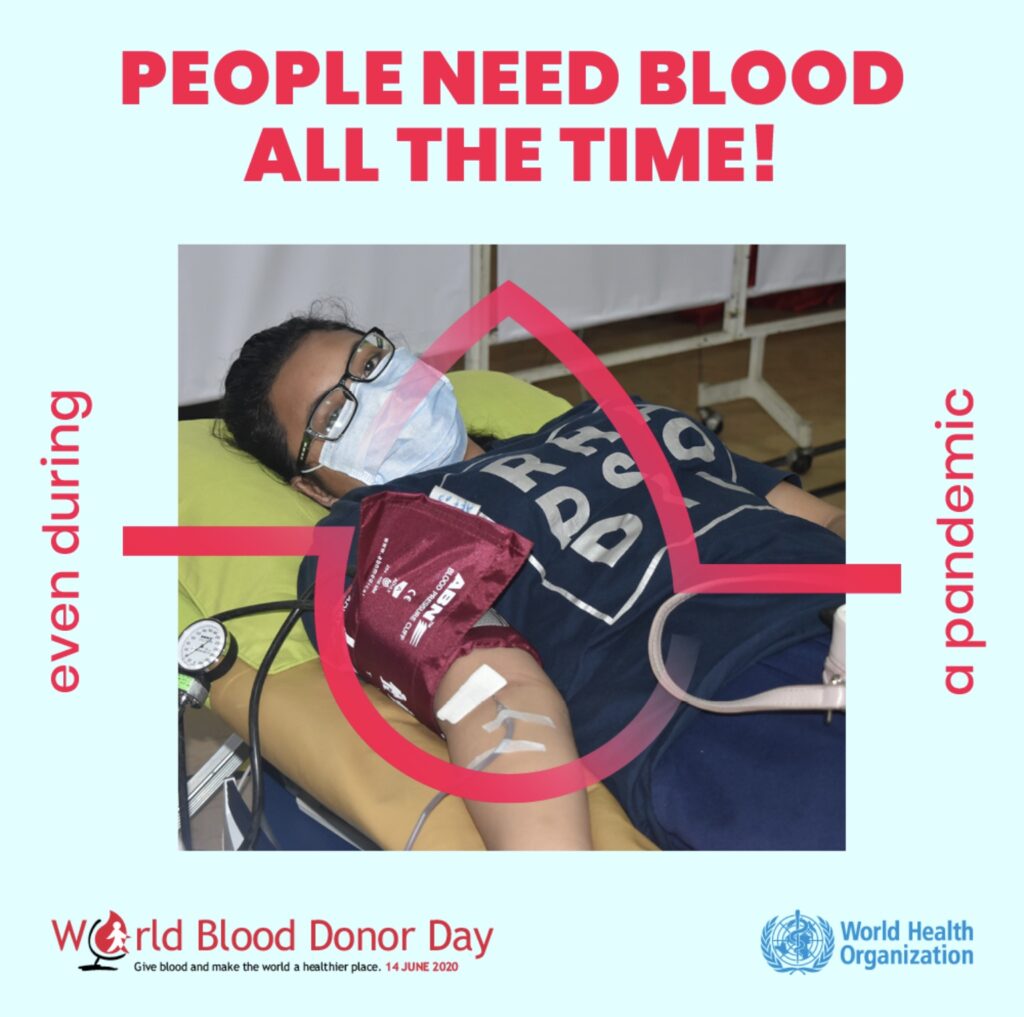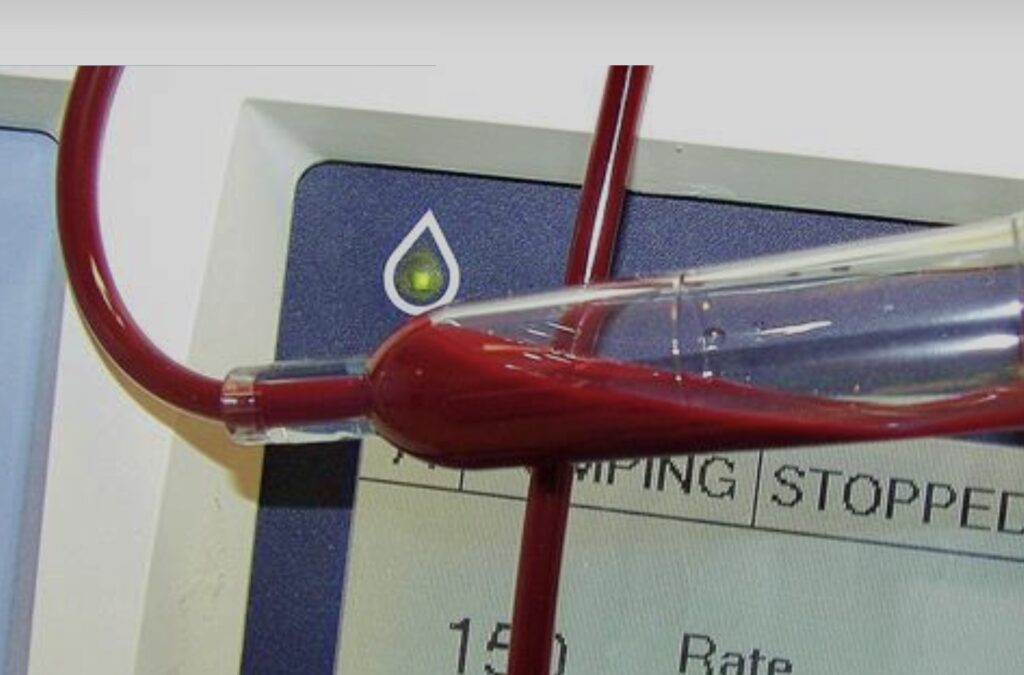By Henrylito D. Tacio
Photos courtesy of WHO
Real heroes don’t have capes and masks; some of them can be ordinary people. Just by donating blood, a person can save another person. A pint of blood can save three lives, so goes a slogan.
Nineteen years ago, in 2001, Niki Taylor figured in a major vehicular accident. “In a matter of seconds, my life completely changed,” she said. “I had severe internal injuries, needed over 41 surgeries (including three in a 24-hour period), and received approximately 100 units of blood.”
These days, raising awareness surrounding blood donation is her life’s passion. “I owe my life to blood donors,” the American supermodel and television presenter pointed out. “I’m forever grateful to people who donate.”
In the Philippines, the celebrity widely known for her efforts to promote blood donation is former movie actress Rosa Rosal. She helped initiate Red Cross programs that set up bloodletting sessions inside campuses and military camps.
During the coup d’etat in 1989, she asked for blood via the airwaves and personally delivered emergency supplies to city hospitals. “I was never afraid. If I have to die, then so be it,” she was quoted as saying.
In 1999, “the original femme fatale of Philippine cinema” was recognized as a Ramon Magsaysay Award – Asia’s Nobel Prize – for public service. She was cited for “her lifetime of unstinting voluntary service, inspiring Filipinos to put the needs of others before their own.”
The Geneva-based World Health Organization (WHO) calls blood “the gift of life.” It states: “Blood is the most precious gift that anyone can give to another person. A decision to donate your blood can save a life, or even several if your blood is separated into its components – red cells, platelets and plasma – which can be used individually for patients with specific conditions.”
Safe blood saves lives and improves health. This is done through blood transfusion, a unique technology that blends science with altruism. Though its collection, processing, and use are technical, the availability of blood depends entirely on the generosity of the donor who gives a gift of life.
“Many patients requiring transfusion do not have timely access to safe blood,” the WHO points out. “Providing safe and adequate blood should be an integral part of every country’s national health care policy and infrastructure.”
The WHO says blood transfusion is needed for: women with complications of pregnancy, such as ectopic pregnancies and hemorrhage before, during, or after childbirth; children with severe anemia often resulting from malaria or malnutrition; people with severe trauma following man-made and natural disasters; and many complex medical and surgical procedures and cancer patients.
Blood is also needed for regular transfusions for people with conditions such as thalassaemia and sickle disease and is used to make products such as clotting factors for people with hemophilia.
“There is a constant need for regular blood supply because blood can be stored for only a limited time before use,” the WHO says. “Regular blood donations by a sufficient number of healthy people are needed to ensure that safe blood will be available whenever and wherever it is needed.”
Blood is replaceable, and life is not. Hollywood actress Donna Reed knows this well. “I’ve been involved with blood donation since the 1980s because there is a critical need,” she was quoted as saying.
“Donating blood is one of the greatest ways to help humankind,” wrote Nikos Alepidis in an article. “By doing so, we save someone’s precious life, and that is a blessing in itself. There are people who hesitate to donate blood if they aren’t given monetary returns or because of the various myths surrounding it.”
Of the 118.4 million blood donations collected globally, 40% of these are collected in high-income countries, home to 16% of the world’s population, data from the WHO states.
“In low-income countries, up to 54% of blood transfusions are given to children under 5 years of age; whereas in high-income countries, the most frequently transfused patient group is over 60 years of age, accounting for up to 75% of all transfusions.”
Based on samples of 1,000 people, the WHO data shows the blood donation rate is 31.5 donations in high-income countries, 15.9 donations in upper-middle-income countries, 6.8 donations in lower-middle-income countries, and 5.0 donations in low-income countries.
According to WHO, most people can give blood if they are in good health. However, there are some basic requirements needed to fulfill before anyone can become a blood donor. These are age (between 18 and 65), weight (at least 50 kilograms), and health (must be in good health at the time a person donates).
Among those who can’t donate blood are individuals who engaged in “at risk” sexual activity in the past 12 months, had a positive test for HIV (AIDS virus), and have injected recreational drugs.
Many countries also implemented the policy to defer blood donors with a history of travel to areas where mosquito-borne infections (like malaria, dengue, and Zika virus) are endemic. Pregnant women and those who have just given birth are deferred to donate blood.
In the Philippines, the website of the Department of Health shares three steps in blood donation: before, during, and after.
Before blood donation, you will be asked to fill-up a donor’s form upon arrival at the blood collection site. A trained professional staff will ask questions regarding your health history and give you pre-donation education counseling. Your weight, blood pressure, pulse rate, and temperature will be checked. Once these are done, a physician will examine you. A small sample of blood will be taken to check your blood type and hemoglobin level.
“Screening and selection procedure will usually take about 10 to 15 minutes,” the health department says. “You are encouraged to give accurate data for your own safety and that of the recipient. All information gathered will be treated with utmost confidentiality.”
During blood donation, a skilled phlebotomist will ask you to lie down on the blood donor’s couch for blood collection. The amount of blood that will be taken will be determined by a physician. It will depend mainly on your body weight and does not exceed 450 milliliters. This procedure takes another 10 to 15 minutes.
After blood donation, you will be advised to rest for ten more minutes. Beverage and simple snacks will be served. A trained professional staff will give you post-donation education and counseling. You will be advised to drink more fluids. The volume of fluids taken is completely replaced by the body within 3 to 5 hours.
There are some side effects of donating blood. “Blood donation is safe for healthy adults,” assures the website healthline.com. “There is no risk of contracting disease. New, sterile equipment is used for each donor.
“Some people may feel nauseous, lightheaded, or dizzy after donating blood,” it continues. “If this happens, it should only last a few minutes. You can like down with your feet up until you feel better.”
Others may experience some bleeding at the site of the needle. Applying pressure and raising your arm for a couple of minutes will usually stop this. You may develop a bruise at the site.
The website suggests that you call the blood donation center when: you still feel lightheaded, dizzy, or nauseous after drinking, eating, and resting; you develop a raised bump or continue bleeding at the needle site; and you have arm pain, numbness, or tingling.
The basic requirement of a potential blood donor are as follows: weight (at least 110 pounds or 50 kilograms), pulse rate (between 60 and 100 beats/minute with regular rhythm), blood pressure (between 90 and 160 systolic and 60 and 100 diastolic), and hemoglobin (at least 125 g/L.). The blood volume collected will depend on the donor’s body weight.
While everyone is encouraged to donate blood, not all can do so. “There are certain conditions that prevent a person from donating blood temporarily or permanently,” the health department says.
Among the temporary conditions are: pregnancy, acute fever, recent alcoholic intake, ear or body piercing and tattooing, and surgery. Persons with the following conditions are not allowed to donate blood anytime: cancer, cardiac disease, severe lung disease, hepatitis B and C, human immunodeficiency virus (HIV), acquired immune deficiency syndrome (AIDS) or sexually transmitted diseases (STIs), unexplained weight loss of more than 5 kilograms over six months, chronic alcoholism, and other conditions or disease stated in the Guide to Medical Assessment of Blood Donors.
“Most blood centers strive to maintain an optimum inventory level of a three-day supply,” the health department states. “Due to unpredictable demands from trauma incidents, the inventory fluctuates hourly. When the blood supply drops below a three-day level, the blood center starts alerting local donors to increase the inventory to a safe operating level.”
Generally, donors are not allowed to give blood more than once every 65 days, according to The Merck Manual of Medical Information.
“Despite the advancement in science, artificially synthesizing blood remains impossible,” says Dr. Shin Young-soo, WHO regional director of the Western Pacific. “We are grateful for all those who make blood donation a regular part of their lives, and we urge many others to do the same. Together, we can save lives.”



